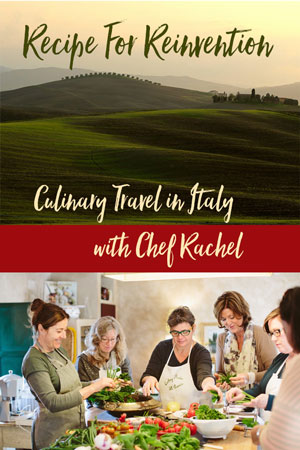You see before you the last remnants of my summer garden. Red peppers. Tomatoes. Basil. Soon the trees will be naked, and conversely, I will be buried under layers of clothing, cold weather wimp that I am. But never mind winter. For now, we still have these bright and fresh reminders of summer, three amazingly simple and incredibly delicious pestos that you can use to dress pasta, rice, grilled meats, crostini, sandwiches, cheese hunks or hell, just lick it off the spoon for a while, like I did, muttering, “mmm, so good, wow…amazing…mmm…”

And speaking of the tastes of summer, I am doing my first wine pairing here, thanks to my good friend Tanya Tuccillo, whose wildly successful Wired For Wine website keeps me well-stocked with an amazing variety of top-rated wines. WFW sends you “one incredible deal each day, until it sells out” with a “lowest price guarantee”. I love having wines, researched and recommended by someone with impeccable taste (Tanya and her right-hand sommelier) delivered to my door, free shipping and all!
We are “pairing” up to give you a lovely wine that would be just the thing to sip while you are making these pestos, or eating them or both! So print out the recipes, go to Wired For Wine and order this Wither Hills Marlborough Sauvignon Blanc 2010 from New Zealand described by the vintner as “intense gooseberry, tomato leaf, fresh cut fennel and red capsicum characters underpinned by the classically pungent melon, guava and passion fruit aromatics, immediately fill the senses.” If that’s not perfect for my pestos, I don’t know what is! So finish reading, print out these recipes, then click over to Wired For Wine to get this not-to-be-missed wine (at a very reasonable price, I might add.) You’ll make the pestos, the wine will arrive and you will be very happy you did.
Just a few more words about the pestos. They are not your run of the mill pestos. Roasted red peppers with almonds, shallots, marjoram, pine nuts. Basil with lemon and olives. Fresh tomato and dried tomato with capers and parmesan. So simple, but you will not believe how delicious. The recipes appeared in one of my favorite magazines, La Cucina Italiana in the August 2011 issue. My photo of the three pesto-laden spoons is an homage to Sarah Anne Ward’s much better photo in the magazine. I knew the minute I read the recipes I had to make them, and share them with you. Happily, I managed to get a bunch of small containers filled with these in my freezer before I ate all of it, and will be enjoying them in December or January and wishing for summer to roll around again. And don’t forget to get Wired For Wine!
NOTE: The roasted peppers called for in the Red Pepper Pesto can be roasted on the stove top as directed, or do as I do and roast them on the outdoor grill. They can be done in the oven too…split in half, skin side up on a sheet pan, at 400 degrees. Keep an eye on them so they char but don’t burn. Here’s mine on the grill.
NOTE ABOUT ADDING TO PASTA: Cook pasta as directed on package, then reserve a cup of the pasta water before draining. Return the drained pasta to the pot, over medium-low heat, add a generous amount of the pesto and enough of the pasta water to help the pesto coat and spread well. Remove from heat after a minute of so. Add any additional cheese, mix well and serve!
Three Pestos
adapted from La Cucina Italiana, August 2011
Red Pepper Pesto
makes 2 cups
INGREDIENTS
2 red bell peppers
3/4 cup sliced almonds
1/2 cup extra-virgin olive oil
1/3 cup fresh marjoram (or dried if you can’t find fresh)
2 tablespoons pine nuts (I used walnuts because of an allergy to pine nuts, I’m allergic to the price!)
2 tablespoons minced shallot (or onions in a pinch)
1/2 teaspoon salt, freshly ground black pepper
PROCEDURE
1. Char peppers over a gas burner set on high, turning frequently, until skin is blackened and blistered on all sides. (or roast in oven or out on the grill.) Transfer peppers to a bowl and cover tightly with plastic wrap; let stand for 15 minutes.
2. Remove peppers from bowl, rub skin off peppers, rinsing your hands, but not the peppers, under cool water as you go. Remove and discard core and seeds, then cut peppers in thirds to make blending easier.
3. In a blender, or food processor, puree all the ingredients, including the roasted peppers, salt and a generous pinch of black pepper, until smooth.
Lemon, Basil and Olive Pesto
makes 1 cup
INGREDIENTS
1 lemon
1/2 cup plus 2 tablespoons extra-virgin olive oil
2 cups packed fresh basil leaves
1/2 cup pitted calamata olives
salt and freshly ground pepper to taste
PROCEDURE
1. Using a microplane or other fine grating tool, zest the lemon. Blend the oil, the zest and the juice of the lemon until it emulsifies. Add the basil, olive, 1/4 to 1/2 teaspoon salt and generous pinch of pepper. Blend until smooth. (Pesto will be on the thin side.)
Two Tomato Pesto
makes 2 1/4 cups
INGREDIENTS
1 cup drained oil-packed sun-dried tomatoes (8.5 oz jar)
1/2 cup extra-virgin olive oil
1 tablespoon capers, drained and rinsed
1 pint cherry or grape tomatoes (I used whole tomatoes…that’s what I had on hand)
3 tablespoons freshly ground Parmigiano-Reggiano or Grana Padano cheese
salt and freshly ground pepper to taste
1 tablespoon finely chipped fresh chives (optional)
PROCEDURE
1. In a blender, or food processor, puree dried tomatoes, oil and capers until well combined. Add fresh tomatoes and puree until smooth, adding 1-2 tablespoons warm water and stopping machine to stir, if necessary, to help blend. Transfer pesto to a bowl and stir in cheese and chives.






































